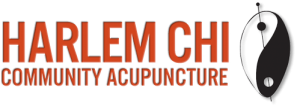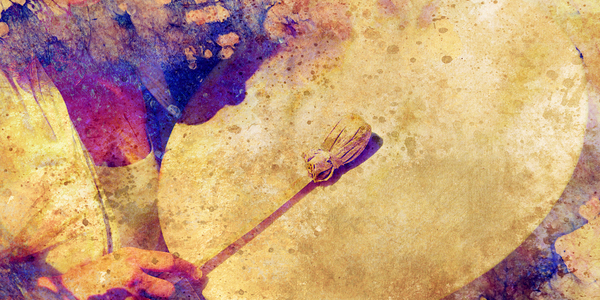We cannot treat with our needles. We cannot touch with our hands. We cannot speak in person with our patients. And like all of you we are forced to go within to seek the teachings that this moment is here to provide.
Emotional Resilience in a Time of Global Upheaval
I have heard from some of you since we closed the practice and those conversations are what prompted me to write this. Naturally, a lot of us are feeling very unsettled. Your full range of emotions are natural responses to your external environment and the internal thinking that ensues. Remember that emotions are not bad or good, but are functional. Fear, Anger, Grief, Joy — They all serve a functional purpose. Anger can move you to action. Fear alerts you to danger. Sadness reminds you of what you need to let go. Joy keeps you in the present moment. A resilient emotional body is one that moves you efficiently through adversity.
The current state of affairs is the external stimuli that currently challenges all of us. We are experiencing a type of communal trauma that I imagine is what any community feels in a time of war. We will all react differently but there are some trends that we are observing. Colossal uncertainty is driving our fear and we naturally seek ways to maintain some type of control. For instance, we cling to the only technologies that can give us a sense of connection. This gives us a fleeting sense of control, hence the rapid acceptance of the “new normal” of tech-mediated “connection.”
A recent Harvard Business Review article recounts an incident at one of their tech-mediated staff meetings when they stopped and asked everyone how they were feeling. One staff member said “grief” and everyone quickly nodded in agreement. We all know things will be different after this pandemic and we don’t know what that future will look like and thus we experience grief over that loss of normalcy. We are afraid to let go of what we know for the unsettling unknown.
Indeed, I personally, in just the last couple of weeks, have gone through the panoply of emotions. Not being able to step into Harlem Chi and do what I love was the first tremendous loss (grief). Facing the financial uncertainty for my family and staff has me unsettled (fear). Underlying anger has also been revealed in my turn to social media to express opinions – fully realizing I am just stirring a seething cauldron of communal fear, anger, and grief (punctuated with much needed levity).
The Importance of “Still Time” to Achieve Emotional Resilience
However, this period could not have illustrated more vividly to me the importance of still time. Now, more than ever, it is important to ask ourselves “what are we truly feeling?” Your emotional response can be efficient or it can be extreme. Some of you may not even be in touch with what you are feeling. Others might be riddled with emotion. Emotional resilience is not how we avoid our feelings or run into them, but how we efficiently manage and balance the extremes in either expression or non-expression.
Much of what we do with Chinese medical clinical diagnostics is to assess where someone is currently in their nervous constitution and disposition. We use our needles to signal their autonomic nervous system to reset to help them course through their emotions, not suppress them. Which is why the first question I ask of my patients no matter how they “name” their emotion is to describe where and what they are feeling “in their body.” Where in their body are they experiencing nervous tension? Are racing thoughts at night making it unable to sleep? Do they feel a gurgling of palpations from their naval going up to their throat? Is there chest tightening? Are they tossing and turning at night or waking up at odd times? All these give us clues as to what the pattern of disruption is and our work is to help them more efficiently move through and channel those emotions. We help them to connect more constructively with their nervous responses.
Self-Healing Through Inner Connection
But how does one do this on their own? When you no longer have your acupuncturist to turn to?
One of the biggest struggles of the moment is managing the loss of connection that every one is feeling. Now that this state of affairs has been forced on us, this is the time to discover another very important connection – our connection with ourselves.
In Chinese Five Element theory the element of Fire is associated with the Heart-MInd, joy, and connection. Connection with other people AND with ourselves. Those are two pathways to cultivate joy. Indeed many ancient mystics have shared with us moments of pure ecstasy achieved through their respective inner contemplative practices. (Teresa de Àvila, Rumi – just to name some popular ones that come to mind.)
I am the first to admit that serious contemplative meditative practices have come very difficult for me. Though I’ve had a steady yoga practice for 20 years, I only recently started a separate contemplative practice – principally to deepen my intuitive presence both with my yoga and my medical practice. Since I was traveling right before this pandemic I had been lax with both. With the recent turn of events I have felt the urgent need to double down and ramp up. Every morning I have been waking up before sunrise just to sit and move in meditation. And this is what I am discovering.
Your Meditative Practice
A meditative practice is how you self-regulate. You sit with your “body,” not your thoughts. You listen to how your body is feeling and no matter how uncomfortable you sit, you breathe. No judgement, no analysis. No matter what bubbles up you let it be. You tear, you let them fall. You cry, just breathe. You feel uncomfortable, you adjust. You’re helping your body do the the job of releasing and coursing. By sitting or moving gently with purpose your body is telling your nervous system that everything is alright. Let your body run the show, not your thoughts.
This path to inner connection is the most compelling to achieve emotional resilience but also the most difficult. The type of meditative practice will look different for everyone who takes on the task. But take this moment to ask what will it be for you, and commit to “practice” it. This is a muscle to train just as any other exercise routine. Just as we exercise to keep our bodies strong we need to train ourselves to properly digest our emotions.
Now is the time to find your deeper connections. Traditional meditative practices are the most direct way to go about this. But for some it might be something as simple as knitting or jewelry making, or playing that instrument that has been on your wall for way too long or walking alone in nature. — Use the things that bring you joy to remain in the present — where your body is most efficient, where it makes the most enlightened decisions.
Take advantage of this time. Do not waste it on busy work that does not bring you pleasure. And take the media in confined doses, on your terms. On the contrary, actively seek inner connective joy without relying on the outside world (or substances) to feed you. Do this when it seems the most difficult.
Spiraling with Purpose
Your fear and anxiety is justified. But you have tools to course through it. And so in times when it seems we no longer have much control over what is going on “beyond us” it is extremely important to start where we do have control and start the slow “spiraling” from within – from where we stand. That quiet contemplative process is how you can tap into the intuition that may reveal to you the rebalancing that is taking place in our world at this time. Despite the whirlwind and uncertainty surrounding you, you remain tethered and can operate from that quiet space. The goal is to rise from this with a new sense of mission and purpose.
We will inevitably emerge from this different than how we were when it all began. When Mother Nature sends us a strong message we must not only listen but truly hear it. We are being forced to ponder and live in real time what yin yang rebalancing means on a global, community, and personal level. What will we learn during this time of forced introspection? What will we change and adjust once we are given a reprieve and emerge from this? How will we engage with our communities to have more control over our destiny?
You have the power to determine how this challenge will forge you.
And so in closing I’d like to share the work of an artist, musician, and motivational speaker – Kai Kight – who has chosen to use his very personal experience with his music to bring to life metaphors for what that inner contemplation can look like.
May we all find the time to stop, listen, and just be.
In Community & Health,
Johanne

- Of Medicine & Metaphor – BREATHING IN THE YUCATAN - October 11, 2024
- Suffer From Seasonal Allergies? - May 1, 2023
- Circadian Rhythms - March 9, 2023





1 Comment
I love this post so much. Thank you
Magdaline